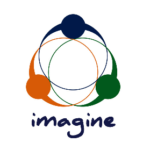Module – DNA, diversity and heredity

This module seeks to provide basic subsides to the students so they will be able to – through the practical observations and the debate – comprehend and respect our similarities and differences in their various levels.
Message: We are all similar and, yet, all different and unique.
1) Introductory dialogue.
2) Understanding the diversity of nature and the different ways of analyzing it: Practical activity of collecting leaves, flowers, stones, etc., in the environment of the community itself. The items are grouped and regrouped according to different criteria defined by the students. Then, the present people are also grouped and regrouped according to different criteria.
3) Observing the diversity among human beings: Activity in which the students receive cards with pictures of people from different regions of the world and then place them on a panel containing a world map without frontiers. All set for a collective discussion about the human variability.
4) Measuring things: The students will measure the dimensions of the leaves, using different instruments that allow different levels of precision (rulers, calipers, etc.)
5)Separating things: Activity with sieve and soil followed by the processes of extraction and migration, in filter paper, of the pigments of the eyes of fruit flies (Drosophila) of different colors. Visualization of the pigments with the naked eye and under ultraviolet light.
6) Going from the macro to the micro: Activity with video presenting objects with different magnitudes of size, until the molecule of DNA.
7) Extraction of DNA from a plant: Activity in laboratory, using homemade ingredients.
8) The universe of microliters: Practical class in which students come into contact and learn to use a micropipette.
9) The human DNA: Practical class of extraction of human DNA .
10) The code of life: Practical activity where students interact with the genetic code through a simple and fun game of assembling plastic pieces, followed by explanatory videos.
11) Separating tiny things: Practical class in which the students learn to make an agarose gel and use it to separate DNA of different sizes (plants, animals and human beings).
12) Back to the variability: Visualization and comparison of the DNA of different species from nature, including human beings and, then, comparison of the DNA from people of different regions and/or countries. Discussion about the similarities and differences among human beings, that naturally vary “inside” and “between” the diverse peoples and ethnic groups.













